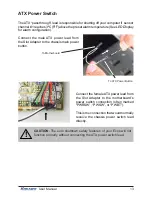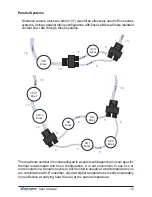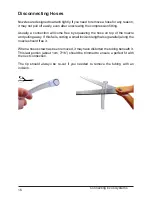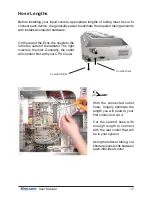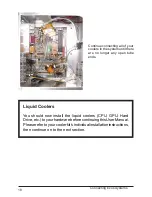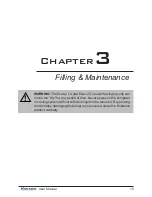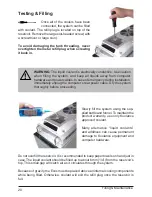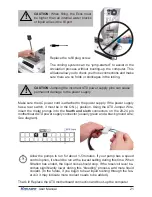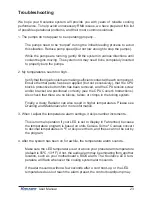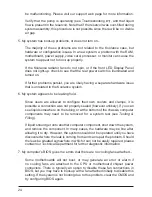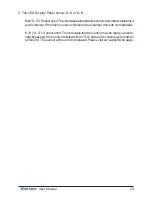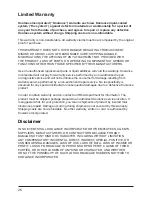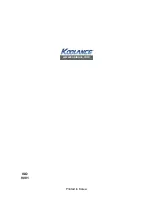
23
User Manual
We hope your Koolance system will provide you with years of reliable cooling
performance. To help avoid unnecessary RMA issues, we have prepared this list
of possible operational problems, and their most common solutions.
1. The pumps do not appear to be operating properly...
The pumps need to be “burped” during the initial bleeding process to avoid
this situation. Reduce pump speed (but not low enough to stop the pumps).
While the pumps are running, gently tilt the system in various directions until
coolant begins moving. The system unit may need to be completely inverted
to properly burp the pumps.
2. My temperatures seem too high...
Verify that the liquid coolers are making suf
fi
cient contact with each component.
Ensure thermal paste has been applied (but not excessively), that the CPU
block’s protective bottom
fi
lm has been removed, and the CPU tension screw
and/or bracket are positioned correctly (see the CPU Cooler’s Instructions).
Also check that there are no blocks, twists, or crimps in the tubing system.
Finally, a dusty Radiator can also result in higher temperatures. Please see
Draining and Maintenance
for more information.
3. When I adjust the temperature alarm settings, it skips number increments...
This is normal operation if your LED is set to display in Fahrenheit, because
the temperature program is based on units Celsius. Some ºC values convert
to decimal temperatures in ºF, or skip over them, and these can not be set by
the program.
4. After the system has been on for awhile, the temperature alarm sounds...
Make sure the LED temperature is at or above your preset alarm temperature
(default is 55ºC, 131ºF). If not, the audio alarm may be eminating from another
location, such as your motherboard’s BIOS alarm. The Koolance LED tem-
perature will
fl
ash whenever the cooling system alarm sounds.
If the alarm sounds within a few seconds after a cold boot-up, or the LED
temperature does not reach the alarm preset, the control board/pump may
Troubleshooting





